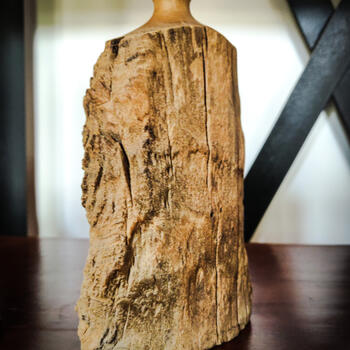However crazy it gets around the office, we always jump at the chance to get out on the road and try and find new ways to look at places, even the ones we've visited many times. Such was the case recently when we found ourselves once again in Jianchuan (剑川).
Jianchuan is the name of both a county and its largest administrative town in northern Dali Prefecture. Despite being larger and more important from a bureaucratic standpoint, the area is far more famous for a little town down the road called Shaxi (沙溪). Despite that, the city of Jianchuan is not without its charms.

During previous visits, getting to know the history and local culture were our top priorities. This time though, we dropped in more or less as tourists, drawn by stories of modern-day artisans preserving the ancient woodworking traditions that make centuries old houses in the region so charming. We weren't disappointed.
The earliest mention of Jianchuan in Chinese historical records is from the year 680, when it is referred to as a waypoint for traders. From then until 1950 — a span of nearly 1,300 years — caravans plying time-worn trade routes on foot or by pony utilized the Jianchuan Valley for forage and rest before continuing on their way.
Slowly but surely, the region's Bai minority artisans began to make names for themselves as master woodworkers and stonemasons. Old habits die hard, and today Jianchuan remains a haven for those talented enough to create art out of logged trees and found pieces of wood.
We experienced this craft firsthand at the Tianyi Woodworking Courtyard (天艺园木雕). The studio is located just south of Jianchuan proper, about eight kilometers south of the city in a tiny town called Diannan (甸南镇). There, artists create everything from abstract works of art to custom-made items for homes.
The Tianyi building is a beautifully restored Bai quadrangle home — an open yard surrounded on three sides by living spaces with the fourth wall used as a decorative focal point. The wings of the former home are comprised of workshops and display spaces. The smell of freshly chopped wood permeates everything.
The artisans at Tianyi can seemingly create something for any taste, as well as items you didn't know you had to have. As mentioned, some of the craftsman specialize in conceptual compositions, while others create ingenious and beautiful containers out of single stumps or branches.

But the most impressive to us were the hand-carved door and window panels. Some feature flowers and other plants, while others are composed of simple geometric patterns. Still others are ornamented with writhing fluid designs that appear to be giant octopuses rising from the sea.
Regardless of each craftsperson's aim — stand alone art, household decoration or simple day-to-day use — the woodwork on display at Tianyi was magnificent. Visiting was a lovely reminder that the old ways of doing things in Yunnan have not died. Little workshops like this dot the provincial countryside. You just have to go and find them.
Images: Yereth Jansen
© Copyright 2005-2025 GoKunming.com all rights reserved. This material may not be republished, rewritten or redistributed without permission.


















Comments
Note that Bai woodworkers were the ones employed over a considerable area and over centuries by other ethnic groups of Yunnan, including by the Naxi of Lijiang, as late as the late 1940s, because of their expertise. But I didn't know of this place in Jianchuan.
@Ishmael: My impression was that the Bai of Heqing were the builders, making houses in a variety of minority styles all over western Yunnan, and Jianchuan was home to the carpenters who made the best window screens and eaves decorations.
Great article by the way.
I would be interested in learning more about these centers of artisan skills around Yunnan. For example Jianshui is a centre for a specific kind of pottery, and Dali is a center for marble work.
Login to comment